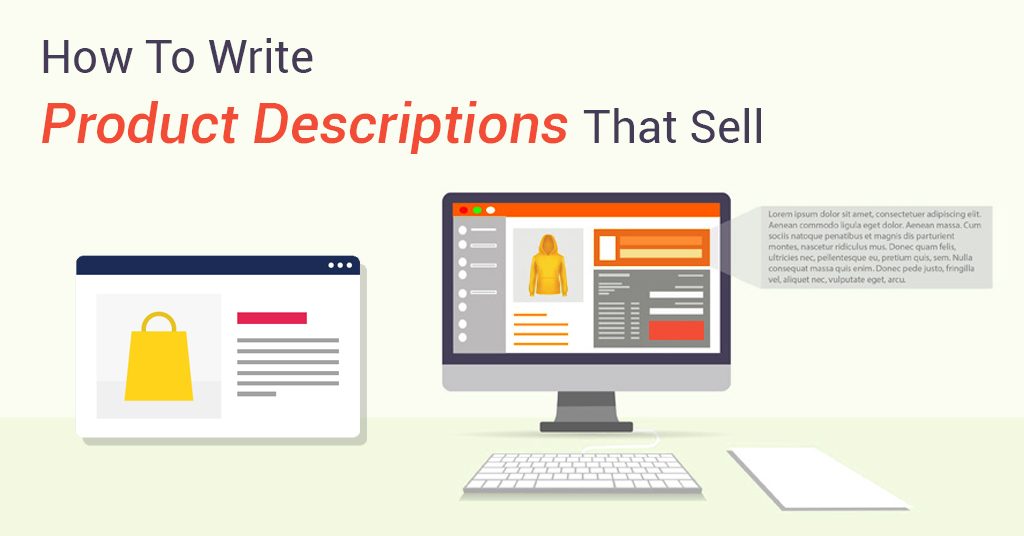
Have you ever wondered how product descriptions impact your eStore sales?
When shopping online, buyers seek answers. They want assurance that investing their money in your product is worth it. So, they want to know everything about the product before making a decision.
In fact, 87% of customers, when browsing eStores, seek product descriptions first, then reviews, and then images. It wouldn’t be wrong to say that writing good product descriptions has become a defining line between an abandoned cart and a settled purchase. It can-
- Fill in the gaps in the buyer’s perception of the product
- Inform them about key benefits and unique features
- Persuade them to make a purchase
However, that’s easier said than done. There’s a reason why eCommerce copywriting services exist!
Writing product descriptions that can convert customers requires creativity and finesse. It’s a delicate balance, hence tough to achieve. Keeping that in mind, we’ve come up with five ways to help you create product descriptions that can positively impact your customer-count.
About Product Description- Why Is It So Important?
Let’s take an example from Amazon.
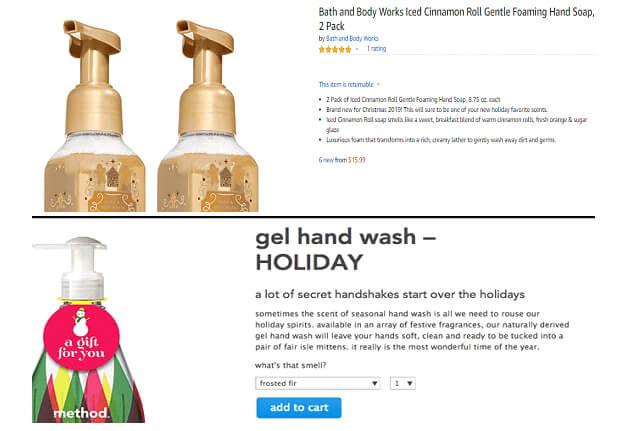
Which of these two products would you be more inclined towards?
Case in point- Product Descriptions Matter.
The job of product descriptions is to declare the product’s features, benefits, and other details. However, it also has a dominant creative aspect.
Much like copywriting, well-written descriptions should persuade buyers through information and presentation. They should provide information that a buyer seeks. The choice of words and their placement should reflect the utility and value of that item to the buyer. And, above all, the description should highlight the problem that the product solves.
Simply put, product descriptions serve as a handy tool to address a buyer’s fears, concerns, and doubts. If utilized properly, they can help move prospects through your sales funnel and bring in better revenue.
5 Rules for Writing Product Descriptions That Can Impress & Convert Buyers
1. Determine the Buyer Persona/Target Audience

Here’s the golden rule- no matter what you write in a description, direct it at only ONE type of buyer.
It’s simple! As long as you know who is going to buy your product, you can include information relevant to them. Your words should convince that specific prospect. You will talk about the pain point that affects them and present a solution, i.e. your product.
For instance, you can’t advertise a beard grooming kit to men and women alike, can you? You can, however, write persuasive copy for men who have beards. Your description could answer their doubts about beard grooming, effective use of the kit, etc. It would, ideally, speak to them, connect with them, and hence, make them like your product.
So, determine the buyer persona first. Also, consumer demographics vary by location, gender, language, interests, age, income, & education, etc. Keep that in mind when writing product descriptions.
2. Highlight the Benefits

It’s natural for a seller to desire good revenue. Thus, it makes sense that you’d want all prospective buyers to know how special your product is. However, as the seller, you are most likely biased in favor of your product. It’s possible that a “good” feature in your opinion might just be an “ordinary” feature for a customer.
Remember, a buyer is only interested in knowing how a product can benefit them.
So, instead of listing out every single feature on the product page, focus on its major benefits. List things like-
- What are the advantages of buying your product?
- What are its highest-value features?
- How will it measurably improve the buyer’s life?
- Does it tackle a pain point? Which one? How?
At the same time, be careful about the examples you follow. Not every product description abides by the same format or template. Their success or failure can be situation-specific.
For instance, including only technical details in a MacBook product page works for Apple. It might not work for an air fryer you’re selling.
Why?
Apple is a global brand. You’re not. Apple targets the world. You might not. Apple has a page-long description for MacBook on its website. Even if you have one, we can’t be sure that a customer will go from your eStore to your site for that description.
Plus, that’s one additional step in the sales funnel, i.e. one more complexity.
So, remember to highlight the unique aspects of your product. Take help from other similar examples. But, don’t base the description on an example far removed from your context.
3. Answer All Possible Buyer Questions
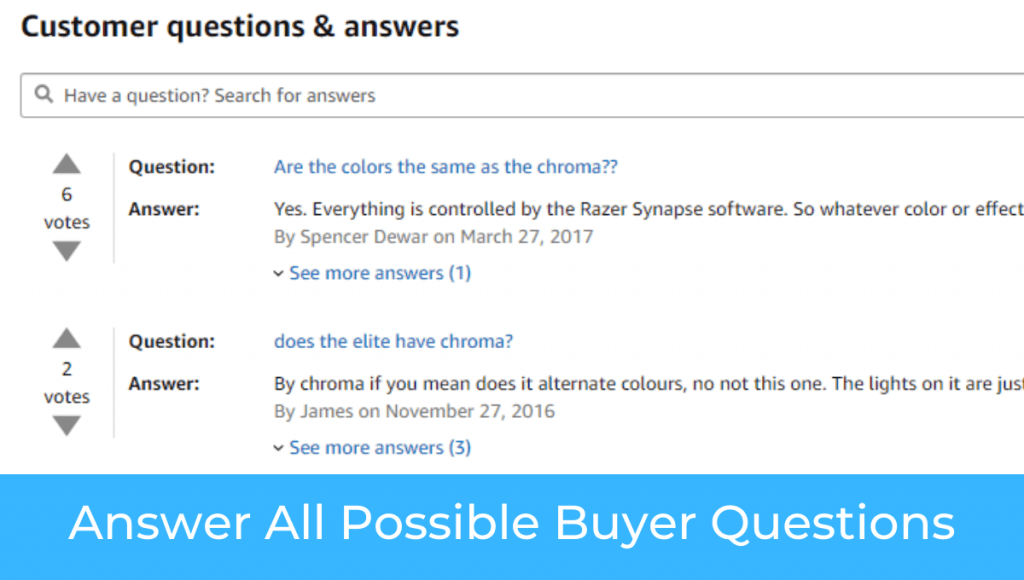
In addition to appealing to the buyer persona and presenting your product’s best features, you also need to dispel all the doubts. After reading the description, a buyer should be clear about what your product is and what it does. So, include even the smallest details like-
- Size/shape/color of the product
- Dimensions
- Warranty or guarantee period and terms
- Quality
- Quantity
- Items in the box
- Extra charges if any
- Shipping costs or shipping calculator for different locations
4. Make It Skimmable
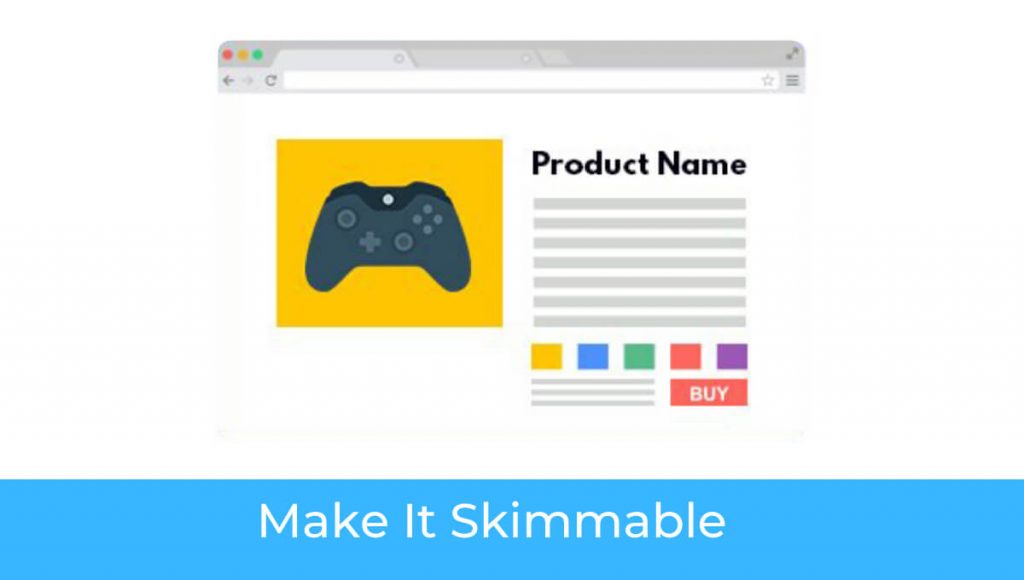
Using a content placement strategy and a page design that’s easy on the eyes is good practice.
Why? Because nobody reads chunky paragraphs.
One, people don’t have that kind of time anymore. Two, looking for useful info in a massive paragraph needs too much patience. Buyers prefer the essential details first. Most of them will skip the content if it doesn’t look easy to scan.
That’s why skimmable product descriptions work best. They carry your message to the visitor quickly and efficiently.
Build a preface with a few sentences. Break down the details into bullet points. But, make sure that the pointers aren’t text-heavy, or that’ll beat the purpose of using bullets. Also, you can try these tips-
- Use headings to attract the visitor’s attention
- Utilize the white space to differentiate content sections
- Use different font sizes
- Promote readability with simple language
- Grab the visitor’s eye with powerful words
- Use bold content to draw the reader to different parts of the description
- When using paragraphs, keep them small enough to ensure retention
With bullets and neatly spaced content, you can win a customer’s attention.
5. Optimize The Description for Search Engines
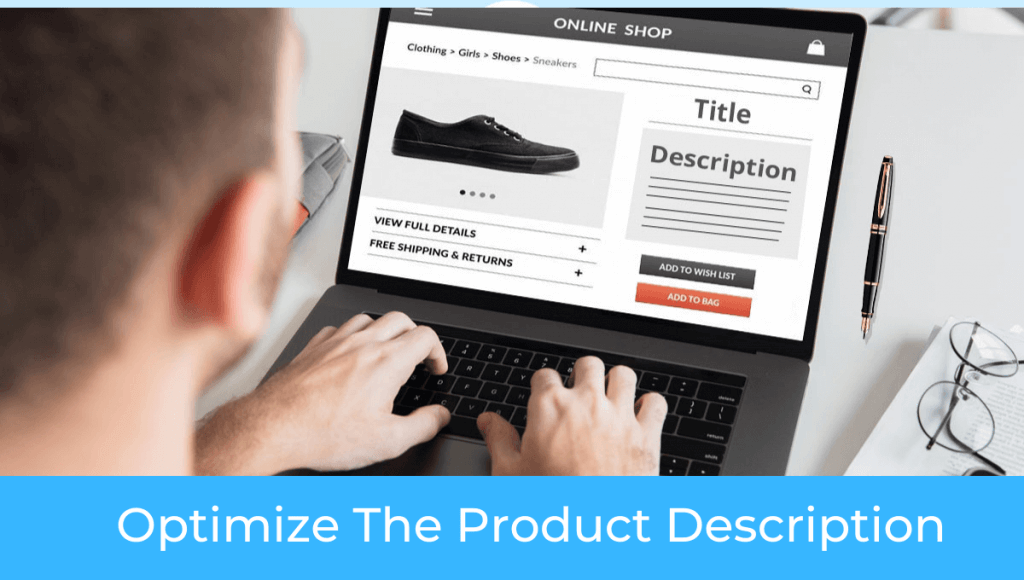
It goes without saying- optimizing your product listing for search engines is a smart move. When done right, it can bring more visitors to your page.
One way of optimizing descriptions is to place relevant keywords strategically across the content. Ideally, the keywords used in the meta description should also be used when writing product descriptions. But, there is no set formula for this. You will need to test different approaches and determine what works for you.
As long as you avoid keyword stuffing and write for the buyer, not a search engine, you’d be fine. Just keep in mind that implementing SEO requires proper research. It takes practice and experience. You won’t get good at once.
Evaluate your competitors. Study their product pages. Only after adequately understanding different aspects that affect a product page’s popularity, you can create an SEO strategy that works.
However, as an approach to improve product descriptions, optimizing the description is certainly a good idea.
Some Quick Tips for Writing Creative Product Descriptions
- Don’t copy from competitors. Write original descriptions
- Use influential words
- Keep the language and tone simple
- Use high-quality, high-definition images
- Stay honest and transparent. Avoid exaggeration
- Add special product notes, i.e. handmade, real jewels, quick shipping, etc.
- Stay buyer-focused. Answer their doubts.
- Keep it concise
Well-crafted Product Descriptions Have Many Benefits
Useful product descriptions can invite customers to your eStore. It can engage them, impress them, & establish a connection with them. In the long-run, it can help your conversion rates grow, and your bounce rates shrink.
Looking for More Help?
DataEntryindia.in provides expert eCommerce copywriting services, complete with SEO-integrated, well-researched product descriptions. Take advantage of our expertise and guide your eStore towards growth and success. Drop a word at info@dataentryindia.in, and we’ll take it from there.